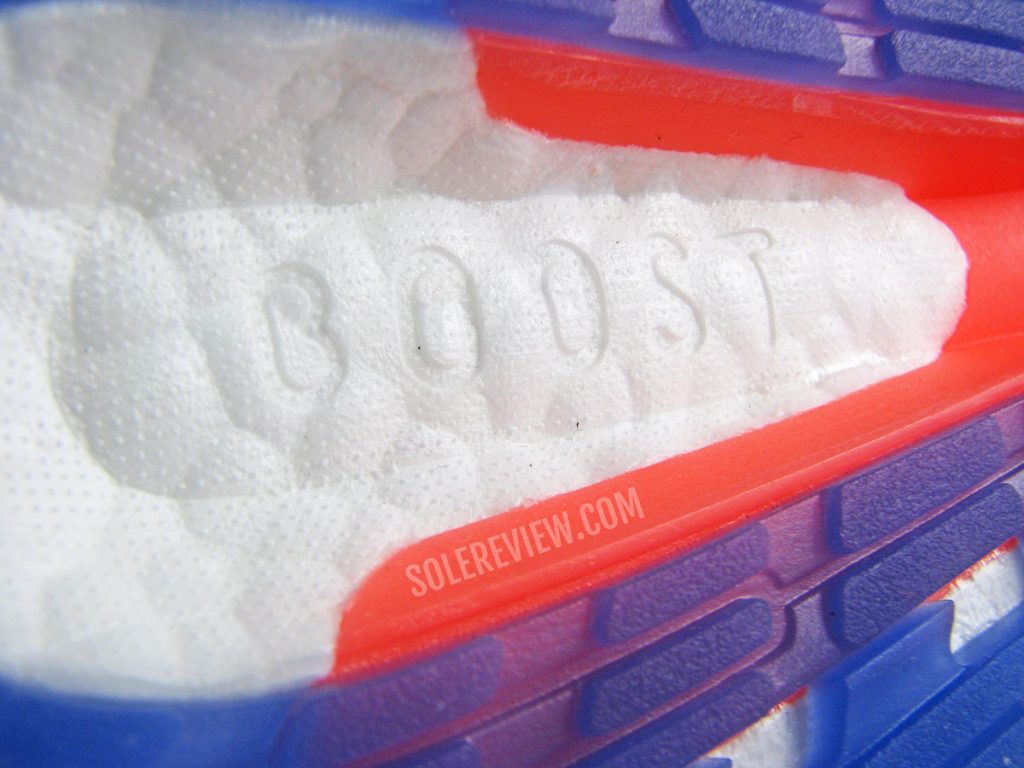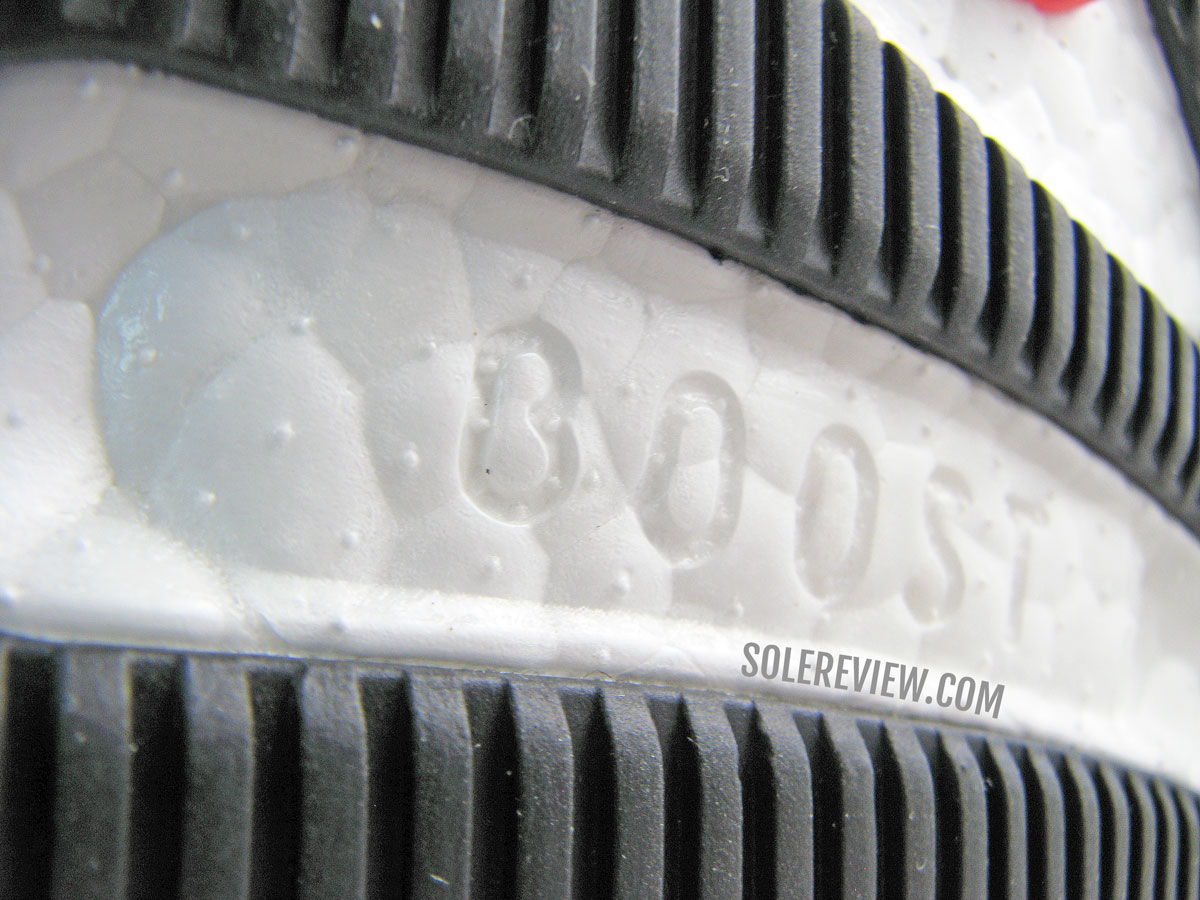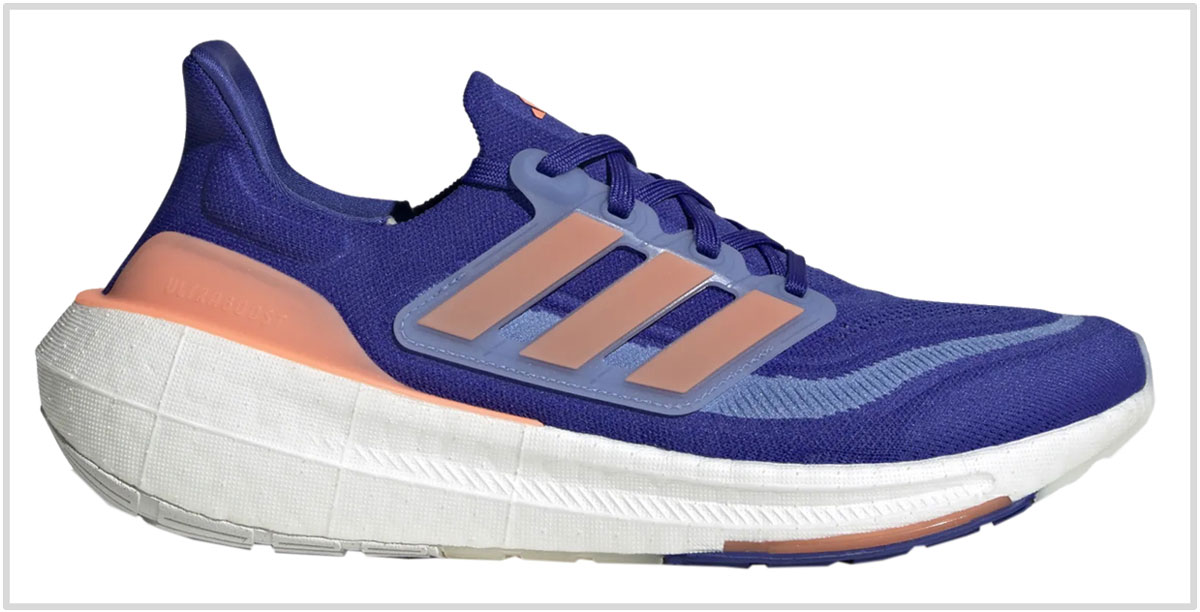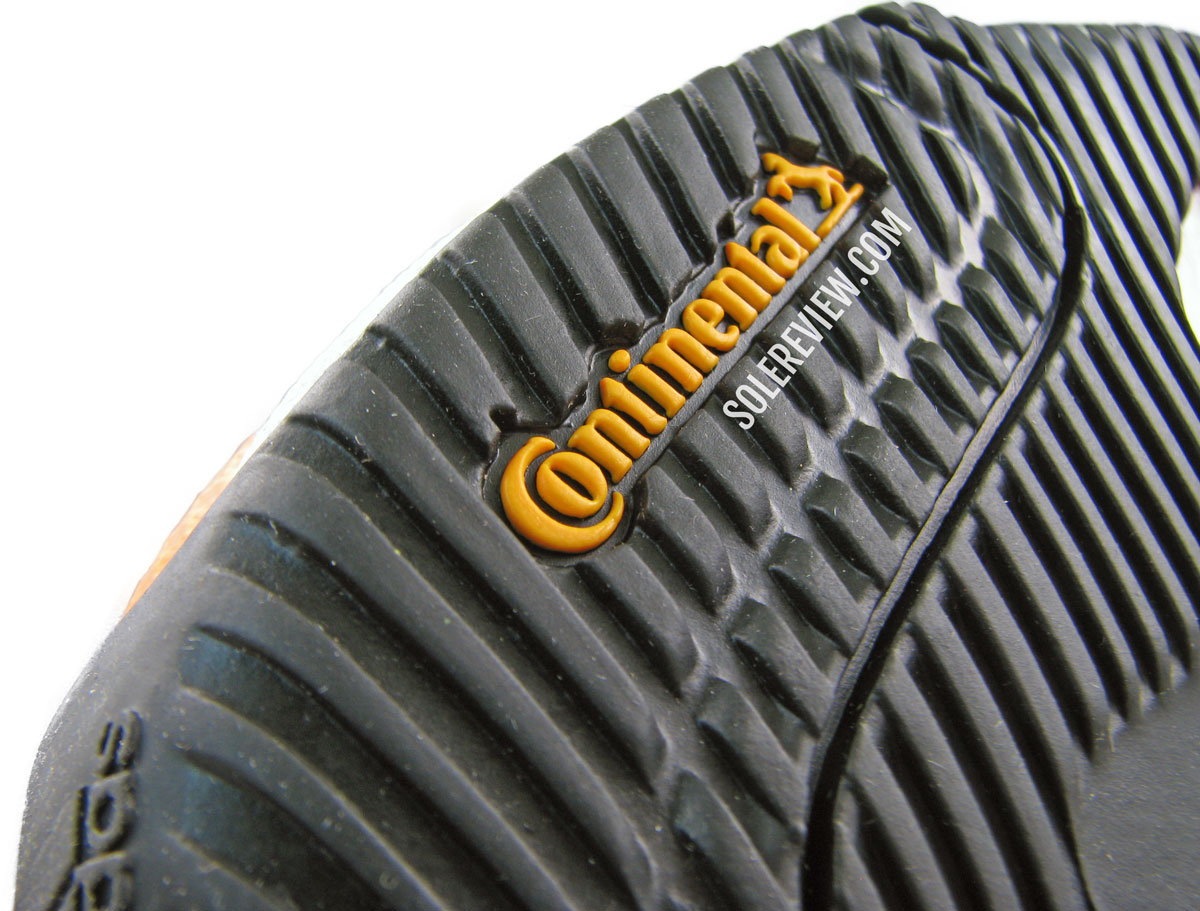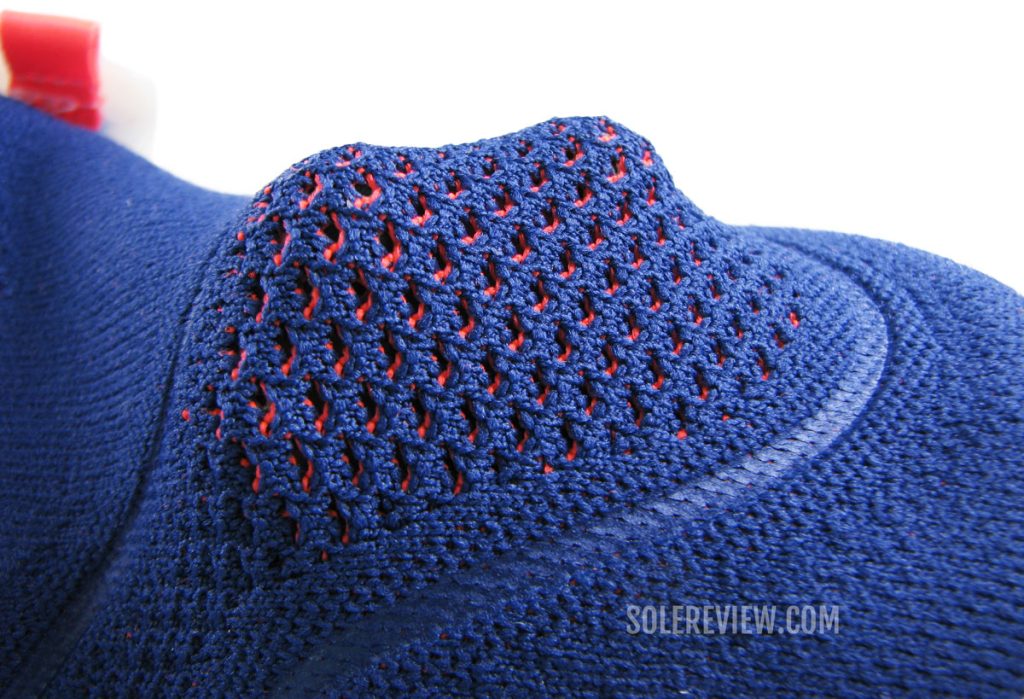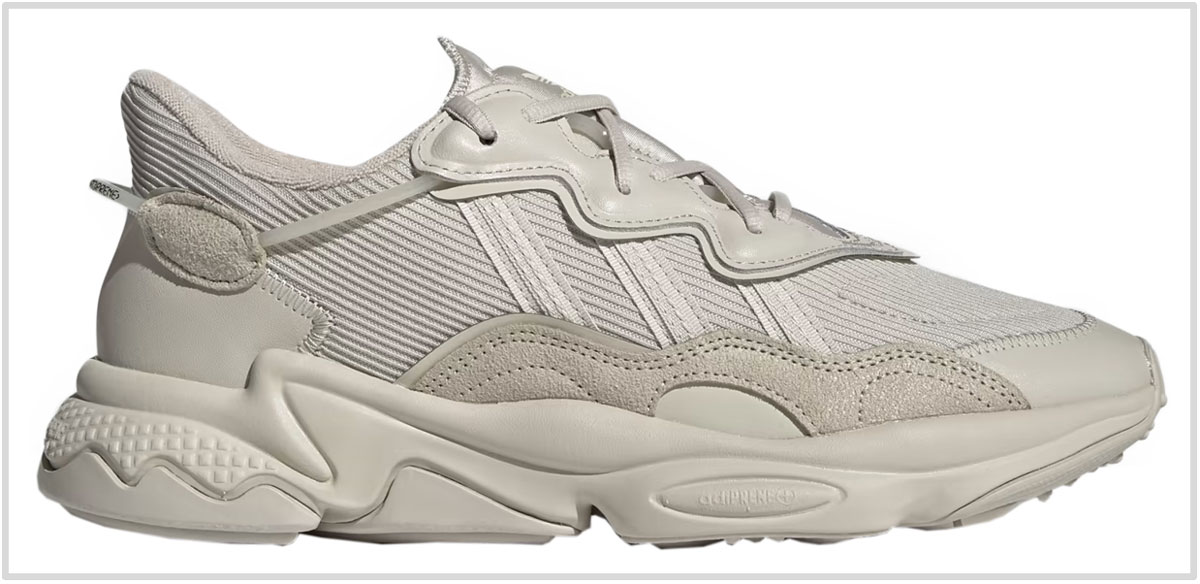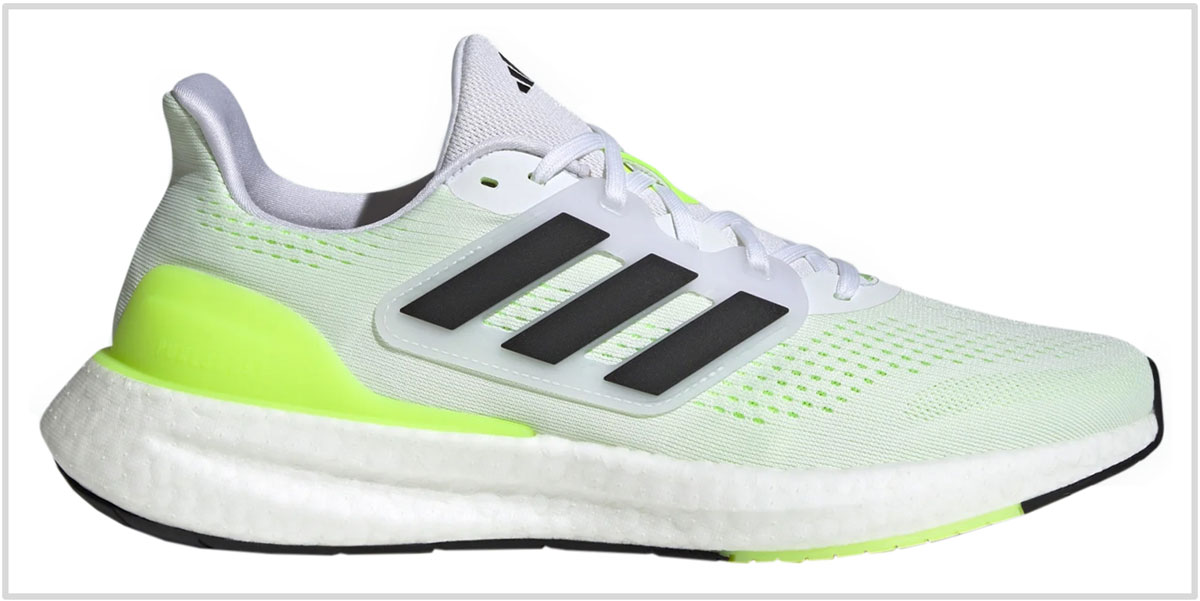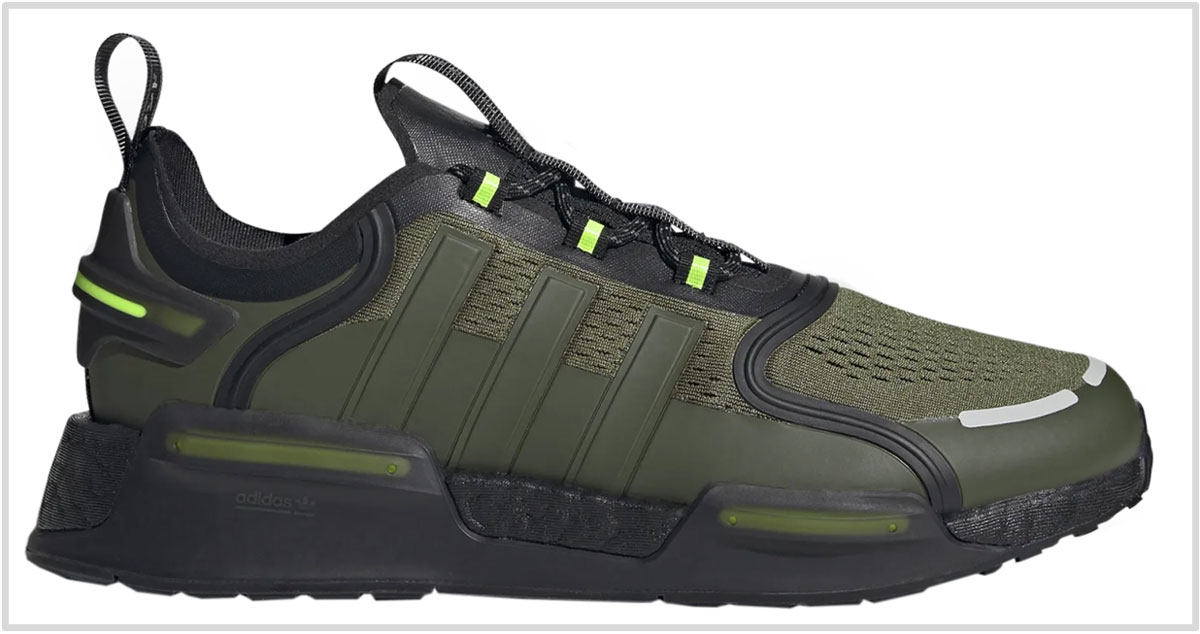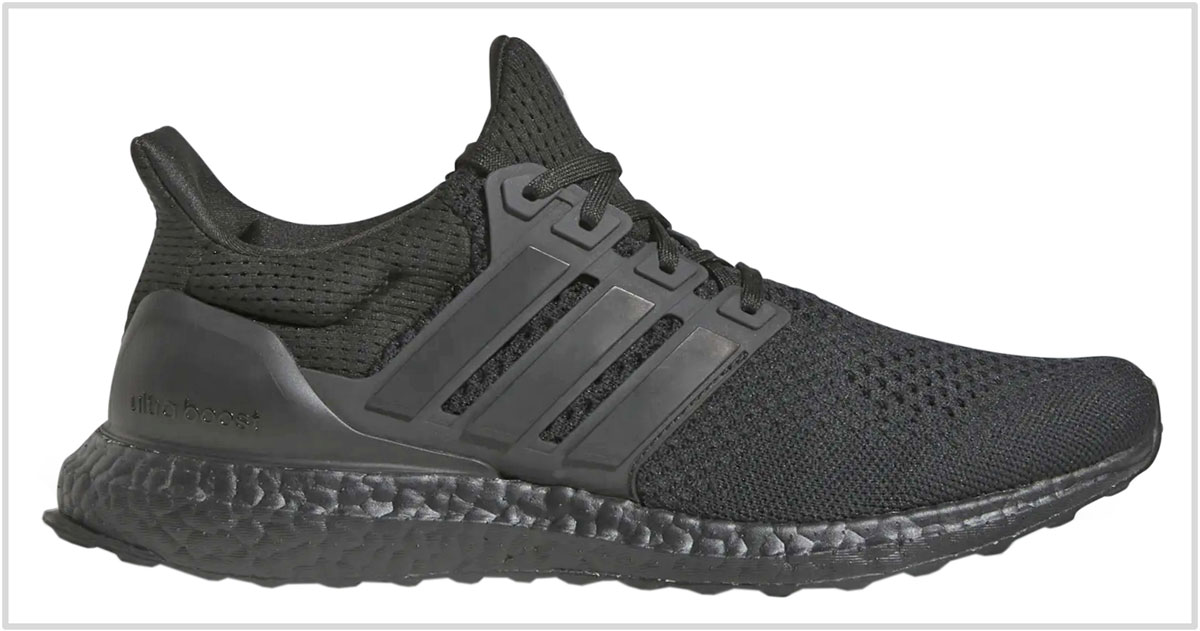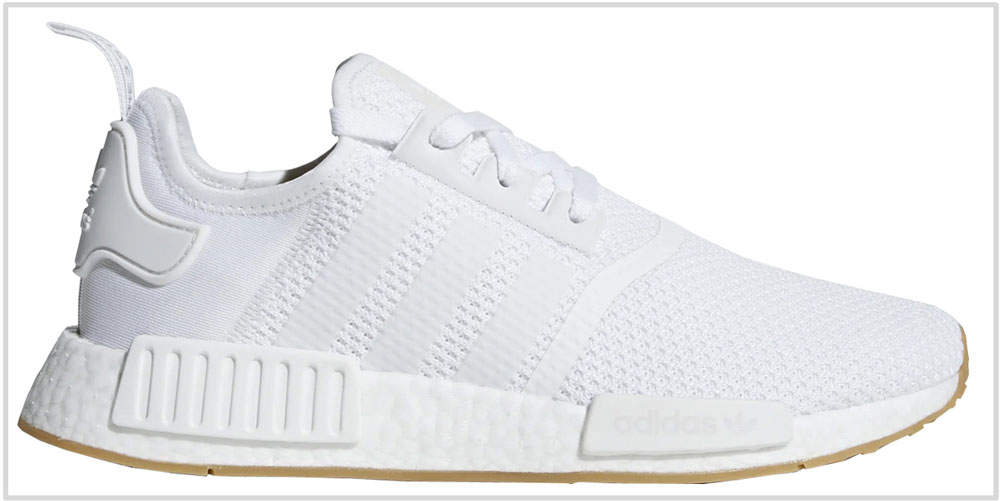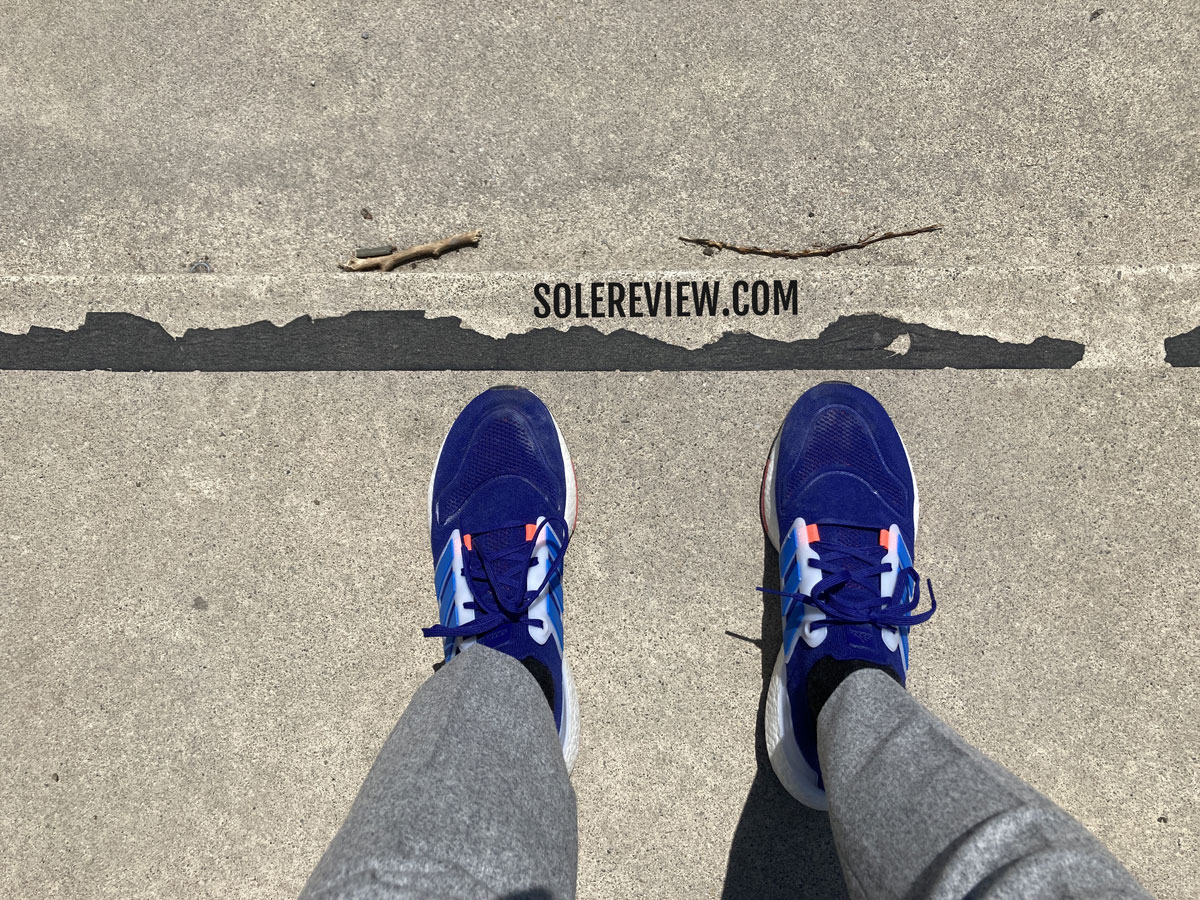
This article has been updated with current models for March 2024. The adidas Ozweego and NMD R1 are new additions. The Adidas Solarboost 5 and Solarglide 6 have been removed.
In this product guide:
- 1. Factors to consider
- 2. Our top pick: adidas Ultraboost Light
- 3. Cushioned trainer for standing all day: adidas Ozweego
- 4. Cushioned sneaker for standing all day: adidas Pureboost 23
- 5. Cushioned sneaker for standing all day: adidas NMD R1 V3
- 6. Cushioned sneaker for standing all day: adidas Ultraboost 1.0
- 7. Supportive trainer for standing all day: adidas NMD R1
Though this article focuses only on adidas products, a multi-brand buyer’s guide on the same topic also exists.
In that guide, we explained the selection criterion for a standing-friendly shoe; you can read all about it here.
For the sake of brevity, we won’t repeat that information. However, here are some adidas-specific features to look out for. Having these design features in an adidas shoe will make it comfortable enough to spend long hours on the feet.
Boost, Boost, Boost
Having a midsole made of this expanded Polyurethane foam increases the chances of the shoe being comfortable enough for standing all day.
While adidas Boost has been overtaken by lighter and more responsive foams – including the adidas Lightstrike Pro – its suite of tricks still works. What’s more, Boost is extremely durable and weather-resistant.
Unlike EVA foams or rubber blends like Nike React that harden in freezing temperatures, Boost maintains its cushioning softness regardless of how cold it is.
adidas Boost also offers excellent resistance to cushioning fatigue.
Whereas lesser cushioning materials like EVA will lose their cushioning after a few hundred miles, most Boost midsoles will outlive the shoe. Being on your feet for many hours requires a cushioned foundation, so a Boost midsole is excellent for that use case.
Solereview recommends: The adidas Ultraboost Light
While the adidas footwear catalog is full of Boost-equipped footwear, the adidas Ultraboost Light (aka the Ultraboost 23) is our favorite pick as a standing shoe.
Its high-volume midsole is a deep reservoir of cushioning, while the wide base makes it supportive. The firm Continental rubber outsole and LEP shank help with traction and stability. An elastic and secure fit prevents the foot from sliding over the midsole.
For 2023, adidas no longer mentions the year (21, 22) in the Ultraboost’s name. The newest model is called the Ultraboost ‘Light’.
Sure, there’s some weight reduction (adidas claims 30%) because of the reformulated Boost midsole, but the ride quality is fairly similar to the Ultraboost 22.
A Continental-branded rubber outsole
A cushioned midsole has a positive effect on ride comfort, but the outsole is equally important.
Having lots of rubber coverage adds support and safety. A shoe needs to grip well on artificial floors, and here’s where rubber outperforms foam-based outsoles. It also makes a shoe durable – something that’s desirable in a shoe that’s intended to be worn all day.
adidas’s Continental rubber is a proven outsole material that offers excellent traction and durability. It’s not to say that other adidas outsoles like Adiwear are bad, but we’ve always found the Continental compound to be safe and reliable.
On this list, the NMD R1, Ozweego, and Pureboost 23 have regular rubber outsoles.
A secure upper
Most adidas Primeknit uppers are secure, and so are the uppers used on the Solarglide and Solarboost. It does help that adidas shoes have an inherently snug fit.
A secure fit improves the shoe’s performance when spending many hours on the feet. A snug fit enhances the cushioning feel by keeping the foot closer to the midsole.
2) adidas Ozweego
With its stitched overlays, embossed panels, and suede accents, the adidas Ozweego channels its inner 90s.
The upper combines soft padding in the heel and tongue with a spacer mesh to make the insides comfortable. The toe box is slightly shallow – a recurring theme in many of adidas’s athleisure sneakers. That said, the Ozweego does a decent job of keeping the foot locked in.
The EVA foam midsole and outsole reminds us of adidas’s ‘feet you wear’ design in the 90s. The multi-piece outsole flexes together with the foam midsole and adds all-day comfort.
The Ozweego doesn’t use Boost foam like the NMD and Ultraboost do, but it’s comfortable enough for standing and walking.
3) adidas Pureboost 23
The adidas Pureboost 23 is exactly what it sounds like. It’s a sneaker with a midsole made of the soft and resilient Boost foam.
Calling it a running shoe is a stretch, as the soft midsole lacks any stability features. That being said, the cushioned ride is what makes the Pureboost 23 an excellent shoe for standing.
The responsive Boost foam makes the Pureboost extremely comfortable. A thick rubber outsole covers most of the midsole and delivers dependable traction over most dry surfaces. Unlike the more expensive Ultraboost, the Pureboost does not have a Continental outsole or LEP shank.
The Pureboost 22 and 23 have the same midsole, so the underfoot experience hasn’t changed. Only the upper gets a plastic heel clip that’s similar to what the Ultraboost uses.
4) adidas NMD R1 V3
The original NMD R1 was inspired by vintage adidas design elements. For example, the color-blocking plugs on the midsole were vaguely based on the 1984 Micropacer or Boston Super.
The third iteration of the NMD R1 still has some of the features that made the V1 and V2 comfortable. The Boost midsole makes the NMD R1 V3 a comfortable standing shoe, whereas the TPU side clips add stability.
The upper comes in different meshes, ranging from a breathable spacer mesh to a compact ripstop fabric. Regardless of the mesh, the upper has a slightly short and secure fit. The speed loops make the NMD V3 quick to lace up, and the molded clip grips the heel in place.
Just know that the NMD R1 V3 has firmer cushioning than the NMD R1 V1 and V2 due to the larger TPU clips. So if you want a softer ride, we recommend the V1 or V2 instead.
5) adidas UltraBoost 1.0
adidas sells a ‘DNA’ variant of the Ultraboost – which is a nod to the original design that we reviewed seven years ago. It’s a softer and lighter shoe than the Ultraboost Light due to its minimal design.
However, it’s easy to forget that the Ultraboost’s legacy was built on the blow-out success of the first few models. The full-length Boost midsole, the soft and elastic Primeknit upper, and the Continental rubber outsole make the Ultraboost 1.0 a very comfortable everyday sneaker.
The cushy Boost foam stack keeps the foot cushioned during extended periods of standing, and the plush upper keeps the foot securely held inside the shoe.
6) adidas NMD R1
There’s not much to the NMD R1’s design, really. A slip-on mesh upper is glued onto a full-length Boost midsole with stabilizers.
The outsole is a single sheet of rubber with honeycomb-shaped windows; this layout helps with flexibility without compromising grip. Only a thin insole and perforated layer separates the foot from the Boost midsole.
Bring all these parts together, and we have a comfortable shoe for standing. The Boost midsole adds plenty of ride comfort, whereas the snug upper and rubber outsole keep the feet supported. Our full review is here.

